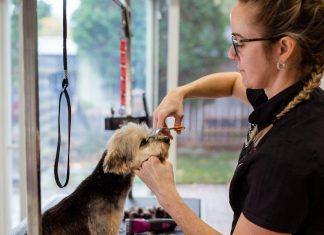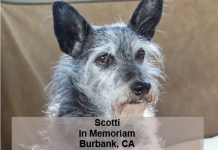Welcoming a new puppy into your life is an exciting and joyous experience, filled with moments of laughter, curiosity, and boundless energy. As you embark on this rewarding journey, one of the most empowering skills you can impart to your furry friend is off-leash obedience. Imagine the freedom and confidence both you and your puppy will feel as they explore the world safely by your side, responding to your commands with trust and enthusiasm. In this guide, we will walk you through the essential steps to train your puppy for off-leash adventures, fostering a bond built on mutual respect and understanding. Whether you’re exploring a local park or simply enjoying your backyard, these techniques will ensure your puppy remains a happy and well-behaved companion, ready to explore the world with you. Let’s dive into the world of off-leash training and discover how to nurture a lifelong partnership with your pup.
Building a Strong Foundation Establishing Trust and Communication
Establishing a robust bond with your puppy is the cornerstone of successful off-leash training. Trust and communication are vital components in this journey. Before your pup can confidently roam without a leash, they need to trust that your commands are in their best interest. Start by creating a safe environment where your puppy feels secure and supported. Spend quality time engaging in activities that strengthen your relationship, like playing fetch or simply sitting together quietly.
- Consistent Commands: Use the same words for commands each time, and ensure everyone in the household does the same.
- Positive Reinforcement: Reward your puppy with treats, praise, or playtime when they respond correctly to commands.
- Body Language: Be mindful of your gestures and facial expressions, as dogs often respond to non-verbal cues.
- Patience and Understanding: Remember that learning takes time. Be patient and avoid expressing frustration.
By focusing on these elements, you lay the groundwork for effective off-leash training. This foundation not only enhances obedience but also nurtures a relationship built on mutual respect and understanding. As your puppy begins to associate your guidance with positive experiences, they will be more inclined to follow your lead, even when the leash is no longer there to guide them.

Mastering Recall Techniques Ensuring Your Puppy Comes When Called
Establishing a reliable recall is an essential skill for any puppy, and it all begins with the right approach and consistent practice. Start by choosing a distinct recall cue—a word or phrase that will signal your puppy to return to you. This should be unique and not used in other contexts to avoid confusion. Once you have your cue, pair it with a positive experience, like a treat or affection, to ensure your puppy associates it with something rewarding.
Practice regularly in a controlled environment before transitioning to more challenging settings. Begin indoors or in a fenced yard, calling your puppy to you with the cue and rewarding them every time they respond correctly. Gradually increase the distance and distractions, ensuring your puppy remains focused and excited to return to you. Remember, consistency is key; practice frequently to reinforce the behavior.
- Use high-value treats or toys that your puppy loves.
- Incorporate recall into daily routines, such as before meals or playtime.
- Always reward your puppy for coming back, even if they took a detour.
Avoid negative reinforcement; if your puppy doesn’t come immediately, resist the urge to scold them. Instead, make yourself more engaging by using a playful tone or showing their favorite toy. With patience and persistence, your puppy will learn that coming when called is always the best option.

Creating a Safe Environment Balancing Freedom with Boundaries
Training your puppy to be obedient off-leash requires a delicate balance between granting freedom and setting necessary boundaries. It’s important to create a safe space where your puppy feels free to explore, yet understands the rules that keep them safe. Here are some key strategies to help you achieve this balance:
- Start with a Controlled Environment: Begin in a secure, enclosed area where your puppy can explore without the risk of running into danger. This could be a fenced backyard or a designated dog park. The idea is to let them experience freedom while still being within your control.
- Consistent Commands: Use clear and consistent commands like “come,” “stay,” and “heel.” Consistency helps your puppy understand what is expected of them. Reinforce these commands with positive reinforcement techniques, such as treats or praise, to encourage desired behaviors.
- Gradual Increase in Freedom: As your puppy becomes more responsive to commands, gradually introduce them to more open spaces. Always keep safety in mind, ensuring that the environment is free of hazards and distractions that could overwhelm your puppy.
By balancing freedom with boundaries, you foster a trusting relationship with your puppy, empowering them to explore the world safely. Remember, patience and consistency are your allies in this journey.
















